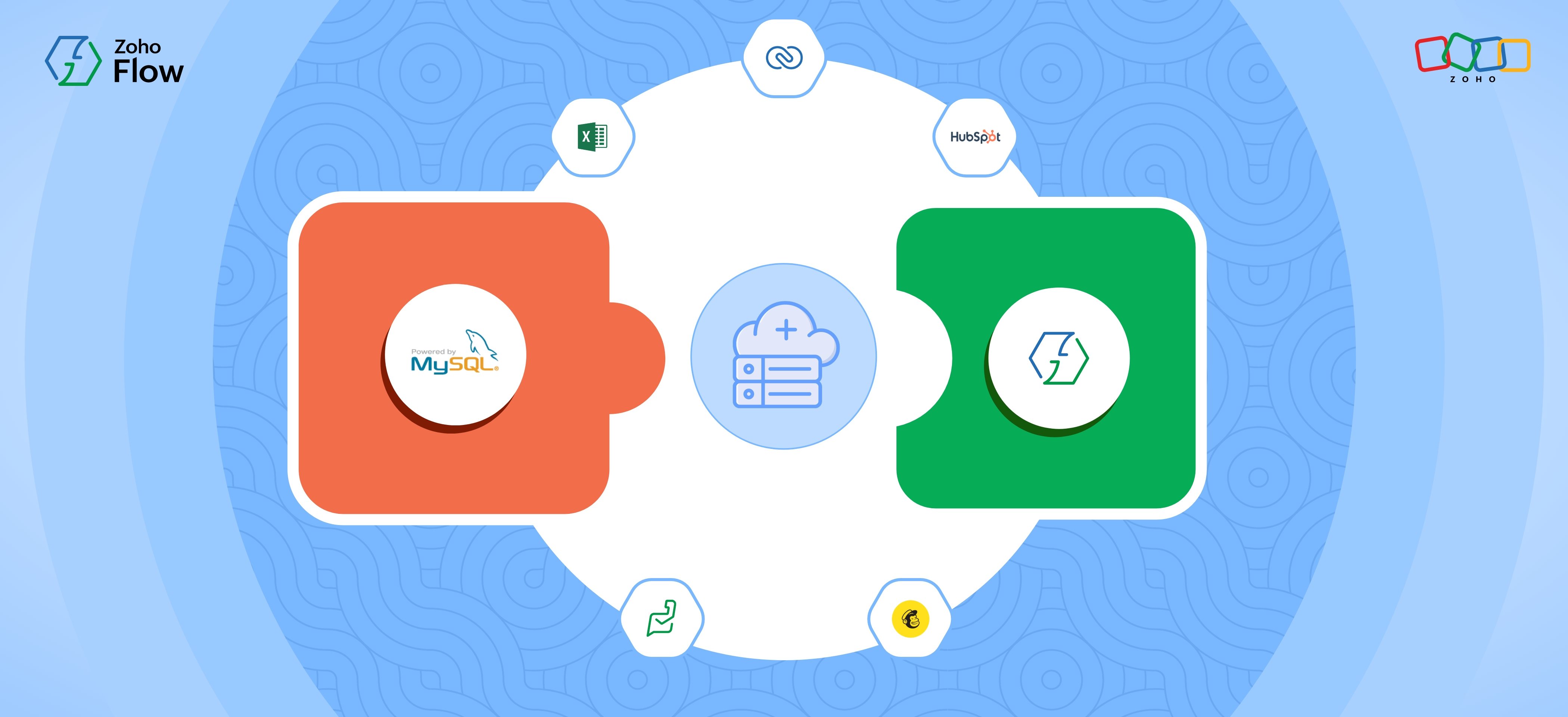Sales Automation: Practical ideas to streamline your sales process
- Last Updated : November 11, 2023
- 4.7K Views
- 4 Min Read

Although a CRM is the most important application in streamlining your sales process, sales automation is not complete after you start using a CRM. If you don’t have the proper systems in place, you could still end up spending nearly half of your time in administrative tasks like updating your CRM, scheduling meetings, or creating records.
Let’s look at some CRM-based automations that can help you spend less time on admin tasks and more time on selling.
Record creation
Adding leads to CRM is a big part of a salesperson’s role. While having a good number of leads in the pipeline is essential, adding them manually can cost a lot of time. However, some instances can be automated.
Web forms: Prospects who fill out a web form can be added to the CRM directly when your CRM is integrated with your forms. If your CRM doesn’t support the integration, you can use an integration application like Zoho Flow to make the integration work.
Social media: An automation that can be helpful is when someone engages with your brand on social media, you can add them as a lead on CRM and create a task to follow up with them.
Trade shows/events: When you go to trade shows or meet people at events, chances are that you’re going to be collecting a lot of business cards. Adding them to your CRM by hand is going to take a lot of time. However, your CRM should provide you with a complimentary card scanner app. As soon as you scan the card, the respective fields in your CRM are automatically updated.
Workflows using macros
Macros let you perform repetitive actions associated with multiple records in one go. Consider a scenario where you’re required to send an email to a number of leads, update a status field to say “contacted” to indicate you’ve gotten in touch with them, and also create a task to schedule a call with them. Performing these three actions one by one for every lead will be time-consuming and exhausting.
However, once you’ve configured macros in your CRM, all you need to do is select the leads and apply that macro. This way, emails are sent to all the leads you want to contact, the status field is updated, and a task is created to set up a call with them.
Using macros for other recurring tasks like converting leads to contacts and creating new deals for contacts will also save plenty of time.
Lead scoring
You’ll have to prioritize contacting leads based on their interest levels. When an email sequence nurtures a lead, you should assign a score to them based on metrics like email open rates, replies, or downloads. Some other indicators of interest are when prospects attend your webinar or event or directly engage with your promotions.
Lead nurturing via an email sequence is often a function of marketing. The interest level of leads might be stored in your campaign management software and not be readily available when your sales team needs it.
If your CRM is not integrated with campaign management software, you can use an integration application to achieve the integration. The lead score can be updated to a custom field on your CRM so that just by accessing the lead on the CRM, you know their interest level.
Lead assignment
Leads should not be assigned to agents randomly. If you have specialists that are in charge of a region, they should be assigned as leads for that region. You might also want to assign small business leads to one person and enterprise leads to another.
Your CRM should have a workflows section that automates lead assignment based on specific conditions. If you set up clearly thought-out lead assignment rules, you can be sure the right people are talking to your leads.
Telephony
Talking with prospects is one of the most important tasks in sales, so it’s important that you need context when you’re speaking with a prospect. You don’t want to be in a situation where you’re trying to dig up information about the prospect while you’re talking with them. Integrating telephony with your CRM will make sure that you’re aware of a prospect’s contact preferences before calling them.
Another obvious advantage of the telephony-CRM integration is that you can make calls directly from your CRM without even needing to dial. All your calls are logged automatically on to your CRM. You can then add notes, create a follow-up task, or even assign the prospect to another sales agent. You can also set up a workflow where incoming calls from a lead get routed to the agent the lead is assigned to. This is especially useful when the agent had already spoken with the lead before. Now when the lead calls again, the conversation can pick up right where it left off.
Booking meetings
Emailing back and forth with a prospect to schedule a meeting can be frustrating and time-consuming. However, using a scheduling app like Calendly makes it possible for your prospects to pick an empty time slot that would work for them. Thus the meeting gets scheduled without any hassles. When you integrate it with your CRM, prospects who book meetings can be automatically added as a lead in the CRM.
Reporting
The reports section of your CRM is one of the most powerful tools you can use to increase sales. Apart from standard reports on deals and activity (call status), you’ll be able to generate custom reports based on your metrics and have them delivered directly to your email. This nifty little automation enables you to review important reports pertaining to deals, agent productivity, and other business-critical metrics all from the convenience of your inbox.
These are just some ways to automate certain aspects of sales. The central idea behind sales automation is to use your CRM as effectively as possible and then make sure your CRM communicates with other apps like campaign management, social media, and meeting scheduling. Our post on essential CRM integrations is a good resource to learn how to build an ecosystem of apps for your business with CRM at the center.
 Karthick
KarthickContent Marketer for Zoho Flow. Passionate about helping businesses make better use of technology.


